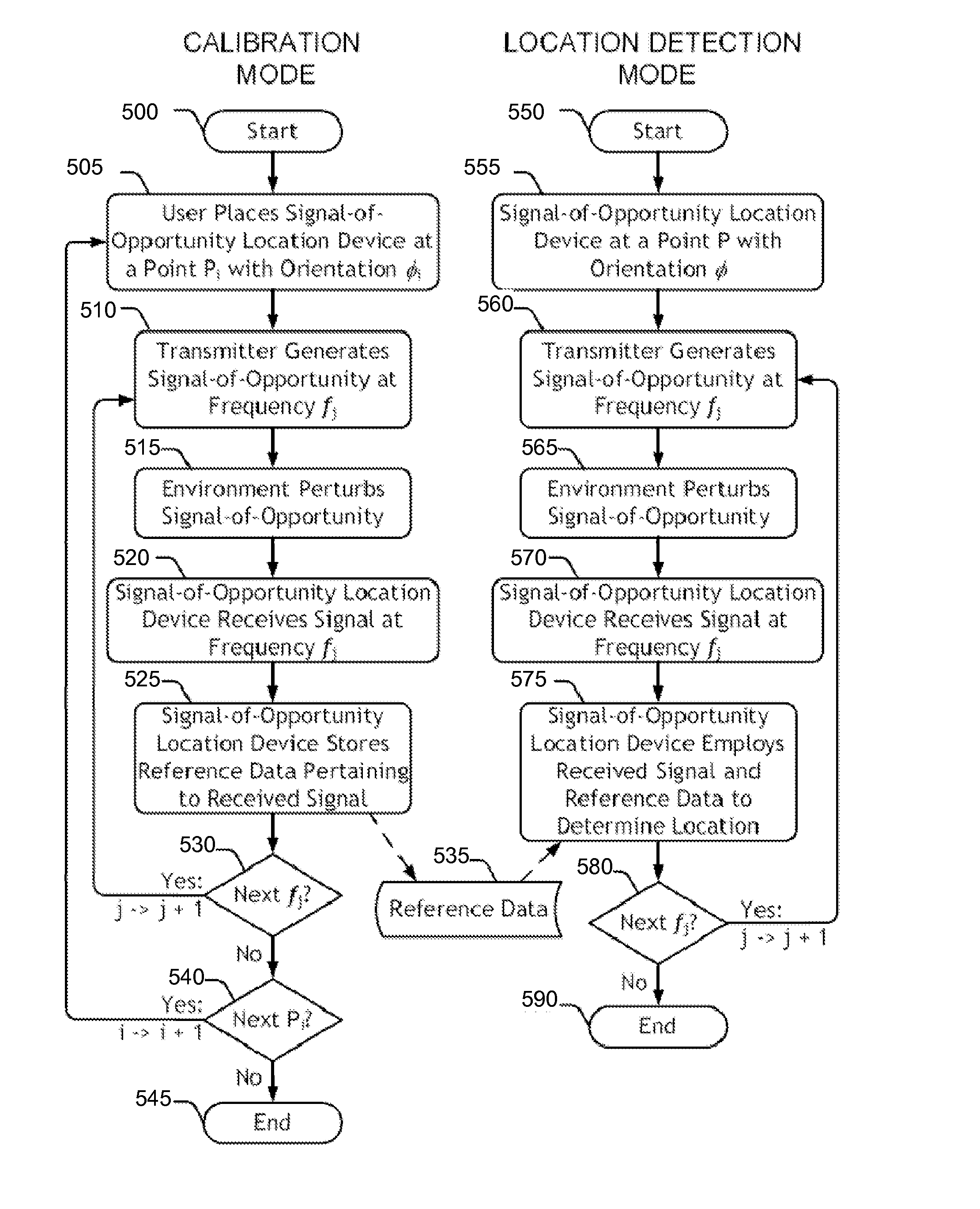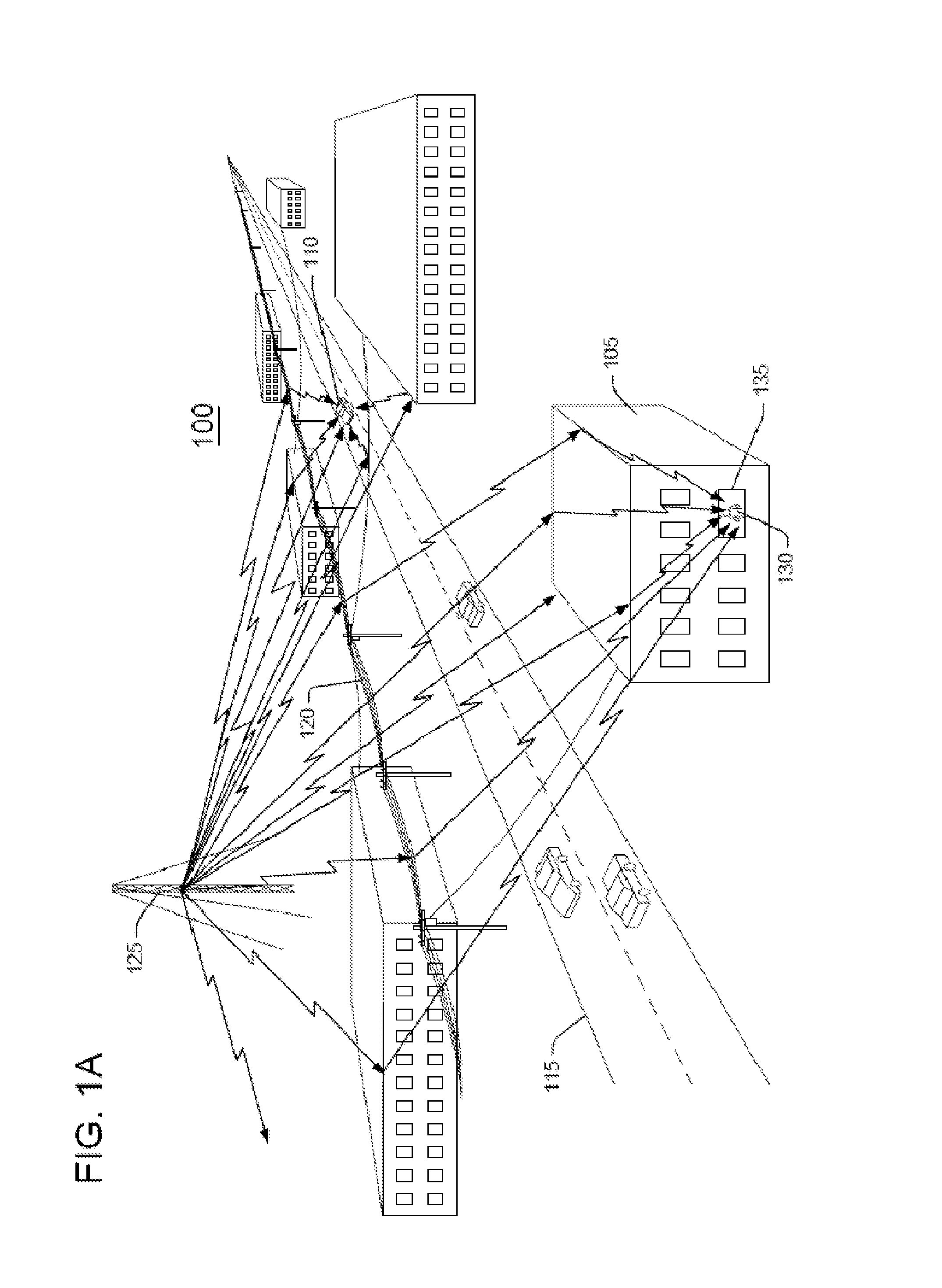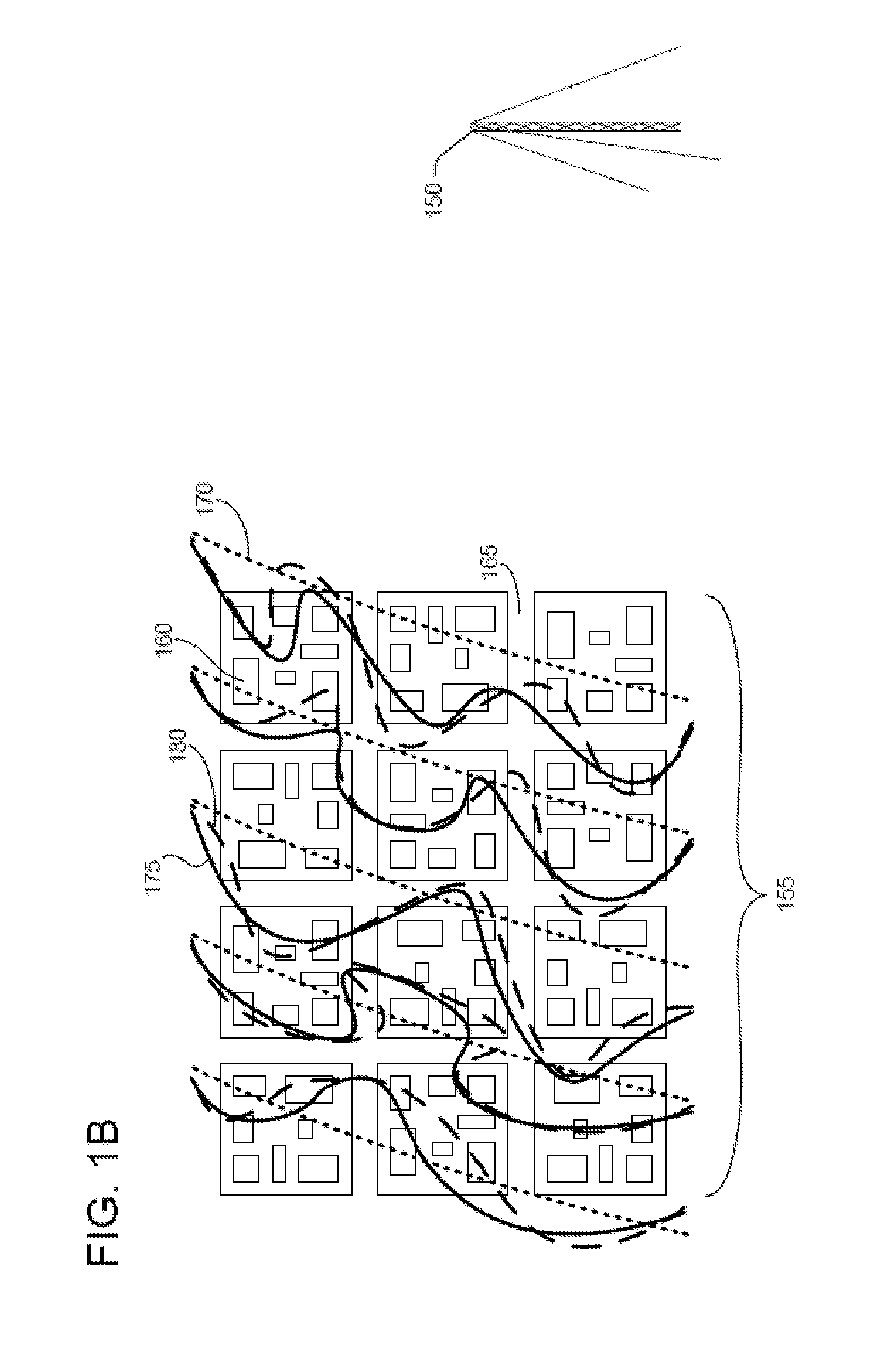Method of near-field electromagnetic ranging and location
- Summary
- Abstract
- Description
- Claims
- Application Information
AI Technical Summary
Benefits of technology
Problems solved by technology
Method used
Image
Examples
Embodiment Construction
Overview of the Invention
[0029]Real-time location system (RTLS) devices track an object's movement and measure the object's location to sufficient accuracy to identify the position of the object within the correct bin or region in the storage area or elsewhere. An important sub-set of RTLS use active wireless devices. Active RTLS may employ 2.4 GHz signals (for instance, Wi-Fi®, Bluetooth®, or ZigBee®), optical, IR, or laser signals, acoustic signals, ultra-wideband (UWB) signals, near-field signals, or other wireless signals. Active RTLS methods may include time-of-flight, time-difference-of-arrival, Received Signal Strength Indicator (RSSI), multilateration, line-of-sight, direction finding, radar, RF fingerprinting, or other methods.
[0030]Incumbent location providers take high frequency, short wavelength wireless systems, like Wi-Fi or UWB, that were optimized for high data rate communications, and they try to use them to solve the challenging problem of indoor wireless location....
PUM
 Login to View More
Login to View More Abstract
Description
Claims
Application Information
 Login to View More
Login to View More - R&D
- Intellectual Property
- Life Sciences
- Materials
- Tech Scout
- Unparalleled Data Quality
- Higher Quality Content
- 60% Fewer Hallucinations
Browse by: Latest US Patents, China's latest patents, Technical Efficacy Thesaurus, Application Domain, Technology Topic, Popular Technical Reports.
© 2025 PatSnap. All rights reserved.Legal|Privacy policy|Modern Slavery Act Transparency Statement|Sitemap|About US| Contact US: help@patsnap.com



